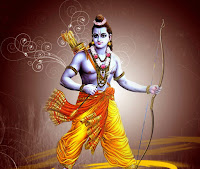Desi Cow Curd Benefits: A Guide to Ayurvedic Wisdom
Curd, also known as yogurt or dahi, is a fermented dairy product that is widely consumed in India and other parts of the world. Curd is made by adding a starter culture of bacteria to milk and letting it ferment for several hours. Curd has many health benefits, such as improving digestion, boosting immunity, and providing probiotics.
However, not all curd is created equal. According to ayurveda, the ancient system of medicine and wellness from India, the quality and properties of curd depend on the source and type of milk used to make it. Among the different kinds of milk, ayurveda considers desi cow milk to be the best and most suitable for human consumption.
Desi cow milk is obtained from indigenous breeds of cows native to India, such as Gir, Sahiwal, Red Sindhi, and Kankrej. These cows are raised in natural and organic conditions, without the use of hormones, antibiotics, or artificial insemination. Desi cow milk is rich in nutrients, such as protein, calcium, iron, vitamin A, vitamin D, and omega-3 fatty acids. Desi cow milk also contains a special protein called A2 beta-casein, which is easier to digest and does not cause lactose intolerance or inflammation.
Desi cow curd is the curd made from desi cow milk. It has many benefits for health and well-being, as per the ayurvedic books. Here are some of the main benefits of desi cow curd:
Balances the Doshas
According to ayurveda, there are three doshas or energies that govern the body and mind: vata (air and space), pitta (fire and water), and kapha (earth and water). Each person has a unique constitution or prakriti that determines their physical, mental, and emotional characteristics. The balance of the doshas in the body affects the health and well-being of a person.
Desi cow curd is considered to be tridoshic, meaning it can balance all three doshas in moderation. It is especially beneficial for vata and pitta doshas, as it nourishes and cools them. Desi cow curd can also pacify kapha dosha when consumed with spices such as black pepper, ginger, or mustard seeds.
Improves Digestion
Desi cow curd is a natural probiotic that contains beneficial bacteria that help maintain the health and balance of the gut flora. These bacteria aid in digestion, absorption, and elimination of food. They also prevent the growth of harmful pathogens that can cause infections or diseases.
Desi cow curd also stimulates the production of digestive enzymes and juices that help break down food and assimilate nutrients. It also soothes the stomach lining and reduces acidity, ulcers, gastritis, and indigestion.
Boosts Immunity
Desi cow curd strengthens the immune system by enhancing the production and activity of white blood cells that fight against infections and diseases. It also modulates the inflammatory response and reduces inflammation in the body.
Desi cow curd also contains immunoglobulins that act as antibodies against foreign invaders. It also contains lactoferrin, a protein that binds to iron and prevents it from being used by harmful bacteria. Desi cow curd also helps in detoxification by removing toxins and waste products from the body.
Promotes Skin Health
Desi cow curd is a natural beauty enhancer that improves the health and appearance of the skin. It moisturizes and nourishes the skin with its vitamins, minerals, and fats. It also exfoliates and cleanses the skin with its lactic acid and enzymes. It also reduces acne, blemishes, pigmentation, and wrinkles by balancing the pH and oil levels of the skin.
Desi cow curd can be applied topically as a mask or a cleanser to improve the skin quality and glow. It can also be mixed with other natural ingredients such as honey, turmeric, lemon, or oatmeal to enhance its effects.
Supports Bone Health
Desi cow curd is a rich source of calcium, phosphorus, magnesium, and vitamin D that are essential for bone health and density. It helps prevent osteoporosis, fractures, and arthritis by strengthening the bones and joints. It also regulates the hormonal balance and prevents bone loss due to menopause or aging.
Desi cow curd also contains vitamin K2, a vitamin that helps in the absorption and utilization of calcium in the bones. It also prevents calcium from depositing in the arteries and causing cardiovascular problems.
Enhances Mood and Mental Health
Desi cow curd positively impacts mood and mental health by influencing the neurotransmitters and hormones that regulate emotions, cognition, and behavior. It helps reduce stress, anxiety, depression, and insomnia by boosting the levels of serotonin, dopamine, and melatonin in the brain. It also improves memory, learning, and concentration by enhancing the function of the neurons and synapses.
Desi cow curd also contains tryptophan, an amino acid that is a precursor of serotonin and melatonin. It also contains tyrosine, another amino acid that is a precursor of dopamine and norepinephrine. These amino acids help in the production of mood-enhancing chemicals in the brain.
References
- Lad, Vasant. Textbook of Ayurveda: Fundamental Principles. Albuquerque: The Ayurvedic Press, 2002.
- Sharma, Hari. Ayurvedic Healing: Contemporary Maharishi Ayurveda Medicine and Science. Delhi: Motilal Banarsidass Publishers Pvt Ltd., 2011.
- Tiwari, Maya. Ayurveda: A Life of Balance. Rochester: Healing Arts Press, 1995.
- Joshi, Shubhra Krishan. Essential Ayurveda: What It Is and What It Can Do for You. Novato: New World Library, 2005.
- Ladha-Sabur, Anjali. The Ayurveda Cookbook: The Science of Life in Your Kitchen. London: Lorenz Books, 2019.






















